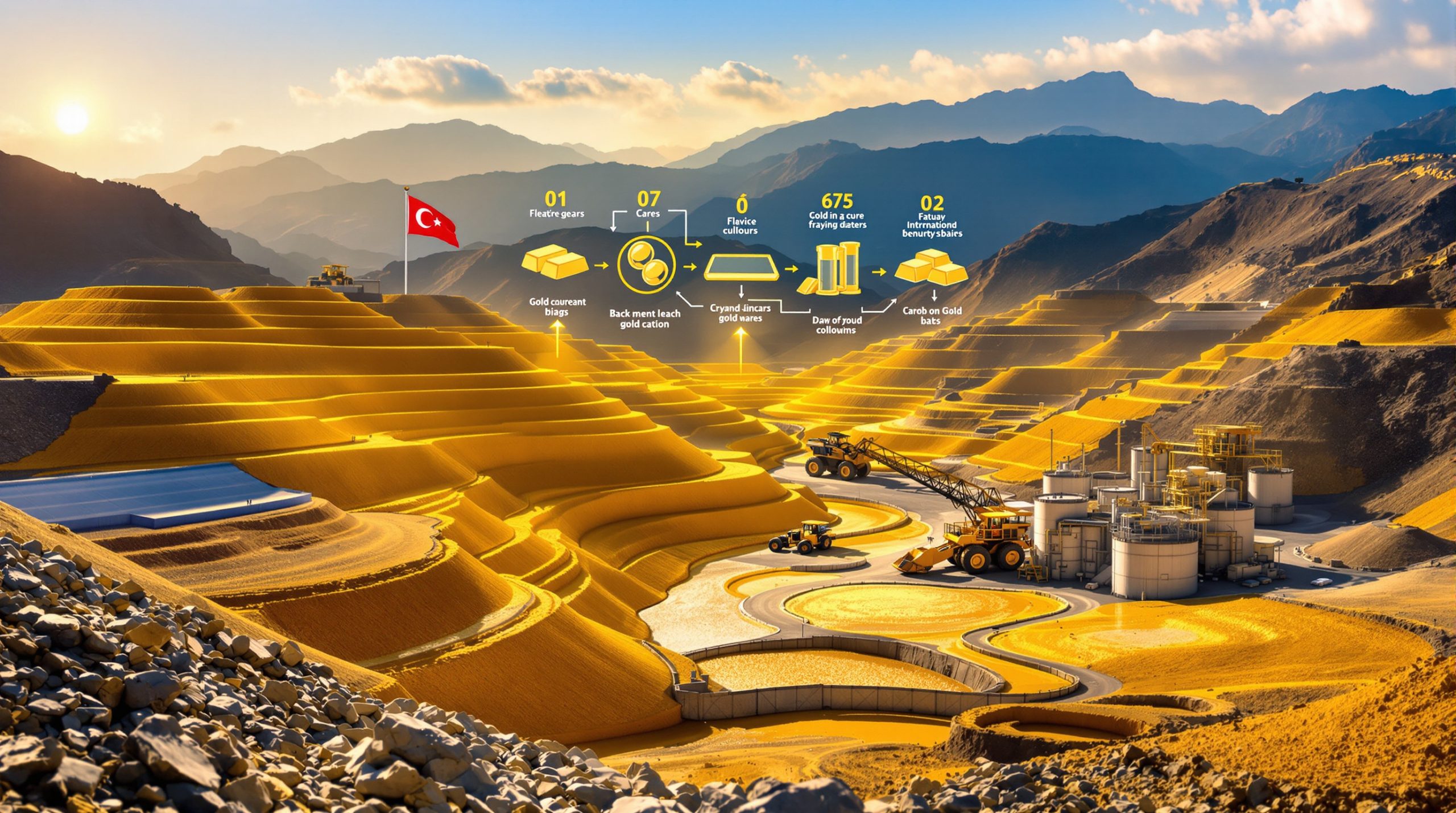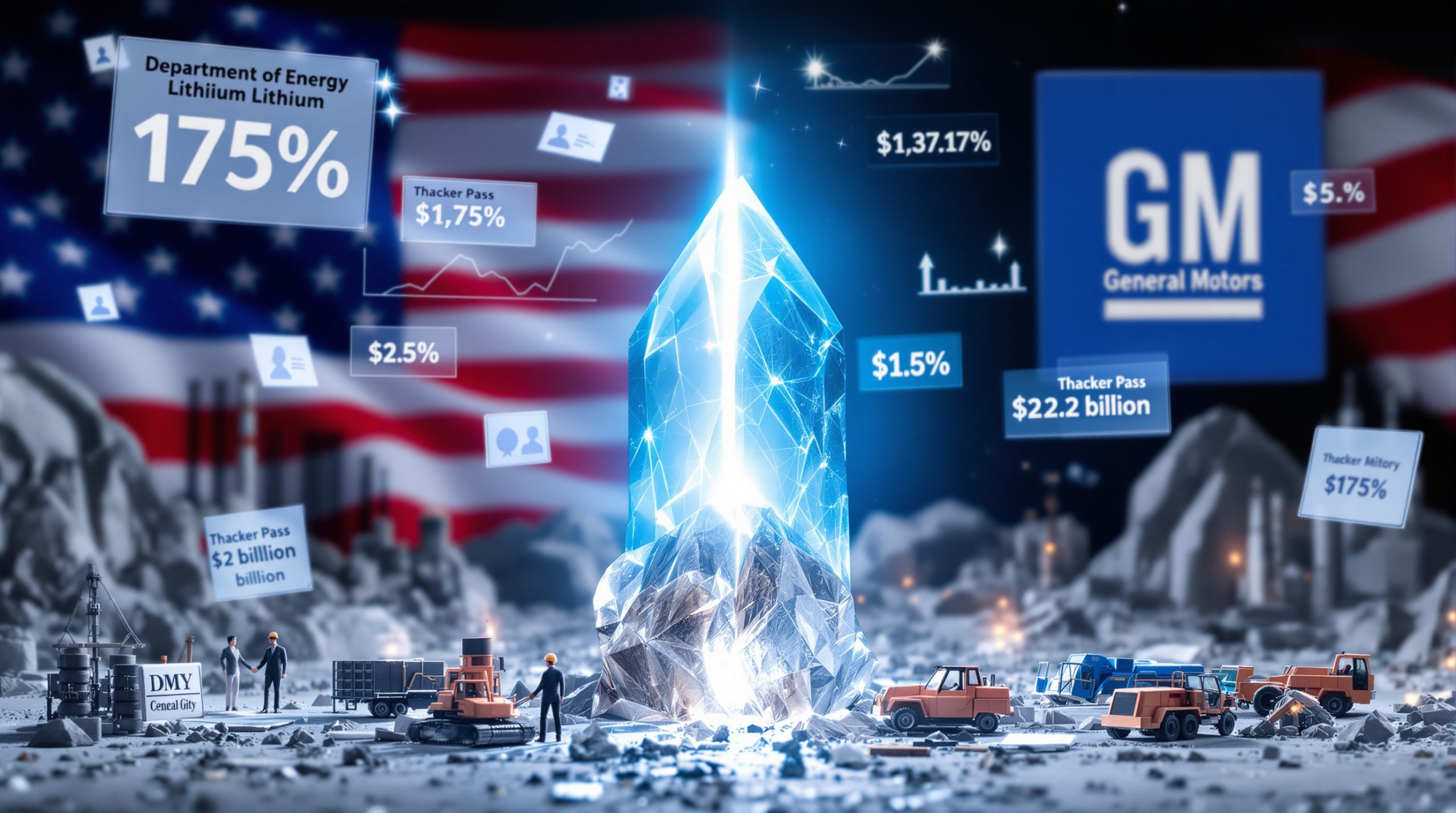India's Strategic Partnerships with Japan and South Korea for Rare Earth Magnet Production
India is making significant moves to establish itself as a key player in the global rare earth supply chain through strategic partnerships with Japan and South Korea. These initiatives aim to reduce dependence on China while leveraging India's substantial natural resources and the technological expertise of its Asian partners. As global industries increasingly rely on rare earth elements for cutting-edge technologies, India's push into commercial magnet production represents a pivotal shift in the international mineral landscape.
Why Is India Seeking International Partnerships for Rare Earth Production?
India's state-owned miner IREL (Indian Rare Earths Limited) is actively pursuing collaborations with Japanese and South Korean companies to develop commercial rare earth magnet production capabilities. This strategic initiative aims to reduce global dependence on China's dominant position in the rare earth supply chain while capitalizing on India's substantial mineral resources.
The Strategic Importance of Rare Earth Elements
Rare earth elements, despite their name, are relatively abundant in the Earth's crust but rarely found in concentrated, economically viable deposits. These elements have become indispensable in modern manufacturing due to their unique electronic, optical, and magnetic properties.
Key applications include:
- Permanent magnets for electric vehicles and wind turbines
- Precision-guided munitions and military radar systems
- Catalytic converters and petroleum refining
- Phosphors in LED lights and display screens
- Polishing compounds for electronic components
- MRI machines and other medical equipment
- Fiber optic communications technology
What makes these elements particularly critical is that they often have no effective substitutes in their applications. For instance, neodymium magnets provide unmatched magnetic strength for their size, making them irreplaceable in miniaturized electronics and efficient electric motors.
China's Market Dominance Creates Urgency
China's overwhelming control of the rare earth supply chain has created significant vulnerabilities for global industries. While China controls approximately 85% of global rare earth processing capacity, the situation extends beyond just mining operations.
The country has systematically developed expertise across the entire value chain:
- Raw material extraction and concentration
- Separation and refining of individual elements
- Conversion to metals, alloys, and powders
- Manufacturing of finished components like magnets
- Integration into higher-value products
In April 2023, China suspended exports of a wide range of rare earths and related magnets, disrupting supply chains critical to automakers, aerospace manufacturers, and semiconductor companies. This action followed similar restrictions in past years, demonstrating China's willingness to leverage its dominant position for strategic advantage.
Industry analysts note that China's dominance isn't accidental but the result of decades of strategic investment, environmental deregulation, and state subsidies. The country recognized the strategic value of rare earths long before Western nations prioritized critical minerals energy security.
What Specific Partnerships Is IREL Pursuing?
IREL is taking concrete steps to establish technology partnerships with both Japanese and South Korean entities, focusing on knowledge transfer and joint production capabilities. These partnerships are likely to be facilitated through government-to-government channels to overcome regulatory and strategic hurdles.
Japanese Collaboration Initiatives
According to sources familiar with the matter, IREL has approached Toyotsu Rare Earths India, a subsidiary of Japanese trading house Toyota Tsusho, to help connect with Japanese magnet manufacturers. Initial meetings have already taken place to explore collaborative possibilities.
The proposed collaboration model includes several key components:
- IREL would supply raw neodymium oxide to Japanese partners
- Japanese companies would contribute technical expertise for processing
- Potential establishment of Japanese production facilities in India
- Technology transfer for high-purity rare earth processing
- Possible joint venture structures to share investment costs
Japan represents a particularly strategic partner for India in rare earth development. After China restricted rare earth exports to Japan in 2010 during a territorial dispute, Japan has actively pursued supply diversification strategies, including investing in processing facilities and exploration projects worldwide.
The partnership discussions build on existing relationships between the two countries, though they come at an interesting time. In June 2023, India asked IREL to suspend a 13-year-old rare earth export agreement with Japan to conserve domestic supplies, potentially signaling a shift toward higher-value processing rather than raw material exports.
South Korean Partnership Opportunities
While specific details about South Korean partnership discussions remain limited, industry experts point to South Korea's significant expertise in high-tech manufacturing and materials processing as complementary to India's resource advantages.
South Korean companies have developed considerable capabilities in:
- High-precision manufacturing of electronic components
- Advanced materials engineering and processing
- Quality control systems for high-performance materials
- Integration of magnets into automotive and electronics applications
A partnership with South Korean firms could provide India with access to different technical approaches than Japanese partners, potentially creating a more robust and versatile domestic industry.
Timeline for Partnership Development
IREL plans to seek board approval for commercial magnet production this year, indicating the urgency with which India is pursuing these partnerships. While establishing commercial production facilities typically requires 2-5 years from partnership formation to operational status, the geopolitical importance of the initiative may accelerate development timelines.
Key milestones in the partnership development process will likely include:
- Feasibility studies and technical assessments
- Technology transfer agreements
- Facility design and construction planning
- Environmental and regulatory approvals
- Training and knowledge transfer programs
- Pilot production phases
- Commercial-scale operations
The exact timeline will depend on factors including the scope of initial facilities, regulatory approvals, and the specific technologies being implemented.
What Are India's Current Rare Earth Production Capabilities?
India has established mining operations but currently lacks the full spectrum of processing technologies needed to create high-value rare earth products independently. This technological gap is precisely what the international partnerships aim to address.
IREL's Existing Production Capacity
IREL currently has the capacity to produce 400-500 metric tons of neodymium oxide annually, according to sources familiar with the operations. This production volume could potentially increase depending on the terms of international collaborations and investments in expanded facilities.
In India, rare earth mining is restricted to IREL as a state-owned enterprise, which has traditionally focused on supplying materials for nuclear power and defense applications through the Department of Atomic Energy. This restricted mining model has limited commercial development of the sector.
India's rare earth resources are concentrated in several regions:
- Monazite-rich beach sands along coastal Tamil Nadu and Kerala
- Inland placer deposits in several eastern states
- Carbonatite complexes containing rare earth mineralization
- By-products from existing mining operations
While India possesses approximately 6% of the world's known rare earth reserves, it produces less than 1% of global output, highlighting the significant development potential.
Technical Gaps in India's Rare Earth Value Chain
Despite its resource advantages, India faces several critical technical gaps in its rare earth value chain:
-
Separation technology: India lacks commercial-scale facilities for separating individual rare earth elements to high purity levels. This separation process is complex, requiring hundreds of extraction stages using specialized chemical processes.
-
Metallization capabilities: Converting rare earth oxides to metals and alloys requires specialized equipment and expertise to handle reactive materials at high temperatures.
-
Magnet manufacturing technology: Producing high-performance magnets involves precise powder metallurgy techniques, controlled atmospheres, and specialized sintering processes.
-
Quality control systems: Ensuring consistent performance of rare earth magnets requires advanced analytical capabilities and testing protocols.
These technical gaps reflect the complex nature of rare earth processing. Unlike many other mineral resources, rare earths require sophisticated chemical processing to separate elements that share nearly identical properties.
Proposed Production Model
The partnership model being explored would address these technical gaps through a phased approach:
- IREL would supply neodymium oxide to technology partners
- Partners would convert materials into finished magnets using their proprietary technologies
- A portion of the processed magnets would be returned to India for domestic use
- Over time, technology transfer would enable more of the value chain to be developed within India
This arrangement would address immediate technology gaps while gradually building local expertise through training programs and joint operations. It represents a pragmatic approach to capability development rather than attempting to independently develop the entire technology stack.
How Would These Partnerships Transform India's Position in Global Rare Earth Markets?
If successful, these strategic partnerships could significantly alter India's role in global rare earth supply chains, potentially establishing the country as an alternative source to China for critical materials.
Potential Market Impact
The development of Indian rare earth magnet production capabilities would introduce a new competitive dynamic into a market long dominated by Chinese suppliers. This could have several significant effects:
- Creation of a new non-Chinese supply hub for rare earth magnets
- Reduction in global supply chain vulnerabilities through diversification
- Potential moderation of price volatility through increased competition
- Development of alternative sourcing options for international manufacturers
- Possible acceleration of similar projects in other countries
While India's initial production volumes would represent a relatively small percentage of global capacity, the symbolic importance of establishing an alternative supply chain would likely exceed the immediate market impact. The demonstration of technical and commercial viability could catalyze further investments in non-Chinese rare earth processing globally.
Economic Benefits for India
For India, successful development of rare earth magnet production would deliver multiple economic advantages:
-
Value addition: Moving up the value chain from raw materials to finished components could multiply the economic value of India's rare earth resources. While raw oxides may sell for tens of dollars per kilogram, finished magnets command hundreds of dollars per kilogram.
-
Import substitution: India currently imports most of its high-performance magnets, representing a significant outflow of foreign exchange that could be redirected to domestic production.
-
Industrial development: Rare earth processing technologies have applications across multiple industries, potentially seeding broader technological development.
-
Employment creation: Advanced materials processing creates high-skilled jobs in manufacturing, quality control, and research and development.
-
Export potential: Once domestic needs are met, India could become an alternative supplier to international markets seeking supply chain diversification.
The economic multiplier effect could be substantial, as rare earth magnets enable numerous downstream industries from electric vehicles to renewable energy generation.
Geopolitical Significance
Beyond economic considerations, India's rare earth partnerships carry significant geopolitical implications:
- Enhanced strategic relationships with Japan and South Korea, reinforcing the "Quad" alliance and Indo-Pacific cooperation
- Reduced collective dependence on Chinese rare earth supplies among democratic nations
- Strengthened position in critical mineral diplomacy and supply chain security discussions
- Alignment with international efforts to diversify critical mineral supply chains
- Potential leverage in broader trade and security negotiations
As critical minerals increasingly feature in geopolitical calculations, India's development of rare earth capabilities could enhance its international standing and strategic importance.
What Challenges Must Be Overcome for Successful Implementation?
Despite the strategic potential, several significant hurdles must be addressed to establish viable rare earth magnet production in India. These challenges span technical, economic, and regulatory domains.
Technical and Infrastructure Challenges
The technical complexity of rare earth processing presents substantial implementation challenges:
-
Processing complexity: Rare earth separation requires hundreds of solvent extraction stages with precise chemical control.
-
Material purity requirements: High-performance magnets require 99.9%+ purity levels for component elements, with even trace impurities affecting performance.
-
Environmental management: Processing generates radioactive byproducts (from thorium and uranium in source materials) and chemical waste streams requiring sophisticated treatment.
-
Quality control systems: Consistent production requires advanced analytical capabilities and strict quality management protocols.
-
Infrastructure needs: Facilities require reliable power, water, and transportation infrastructure, along with specialized materials handling capabilities.
-
Knowledge transfer barriers: Proprietary technologies and specialized expertise may be difficult to fully transfer between organizations and countries.
These technical challenges have historically limited rare earth processing to a small number of companies globally, with significant barriers to new entrants.
Investment and Economic Considerations
The economic aspects of rare earth processing present additional challenges:
-
Capital intensity: Establishing processing facilities requires substantial upfront investment, potentially hundreds of millions of dollars for commercial-scale operations.
-
Operational costs: Energy, chemical inputs, waste management, and specialized labor contribute to high operating expenses.
-
Chinese competition: Established Chinese producers benefit from economies of scale, state subsidies, and less stringent environmental regulations.
-
Market volatility: Rare earth prices have historically experienced significant fluctuations, complicating investment decisions.
-
Return timeline: Facilities may require several years to reach full operational capacity and profitability.
-
Technology obsolescence risk: Ongoing research into alternative materials and recycling technologies could potentially reduce demand for virgin rare earth materials.
Securing sufficient investment given these economic uncertainties will require strong government support and strategic vision from both Indian and partner entities.
Regulatory and Policy Frameworks
Regulatory considerations present a third dimension of implementation challenges:
-
Mining restrictions: Current limitations restricting rare earth mining to IREL may need modification to support expanded operations.
-
Environmental regulations: Appropriate frameworks for managing radioactive and chemical byproducts must be established and enforced.
-
Technology transfer agreements: Intellectual property protection and licensing terms will require careful negotiation.
-
Export and import regulations: Movement of materials across borders may face regulatory hurdles, particularly for materials with dual-use applications.
-
Land acquisition and permitting: New facilities will require appropriate permissions and local acceptance.
-
International trade considerations: WTO compliance and existing trade agreements may affect partnership structures and operational models.
Addressing these regulatory challenges will require coordinated action across multiple government agencies and potentially new policy frameworks specific to the rare earth sector.
How Does This Initiative Connect to India's Broader Rare Earth Strategy?
IREL's partnership efforts represent one component of a more comprehensive approach to developing India's rare earth capabilities and securing access to these critical materials.
Domestic Expansion Plans
India's broader rare earth strategy includes significant domestic expansion initiatives:
-
Resource mapping: Geological Survey of India has intensified efforts to identify and quantify additional rare earth deposits throughout the country.
-
Mining expansion: IREL plans to increase extraction from existing operations and develop new mining sites to expand raw material availability.
-
Processing development: Beyond magnet production, India aims to develop capabilities across the rare earth value chain, including separation, metallization, and component manufacturing.
-
Research and development: Academic and government research institutions are working to develop more efficient extraction and processing technologies tailored to Indian resource characteristics.
-
Recycling initiatives: Programs to recover rare earths from end-of-life products are being explored to create secondary supply sources.
These domestic efforts aim to establish a more self-sufficient rare earth value chain while the international partnerships provide immediate access to advanced technologies.
International Resource Access Strategy
India is simultaneously pursuing international opportunities to diversify and secure its rare earth supply sources:
-
IREL is exploring potential rare earth mining opportunities in Argentina, Australia, Malawi, and Myanmar, according to sources familiar with the matter.
-
These international ventures could provide access to different types of rare earth deposits than those found domestically, potentially expanding the range of elements available.
-
International mining partnerships could also provide additional operational expertise and technology exposure.
-
Diplomatic initiatives are underway to secure favorable trade and investment terms for critical minerals in multiple jurisdictions.
This dual approach—developing domestic resources while securing international access—provides redundancy and resilience in India's rare earth strategy.
Strategic Shifts in Resource Management
Recent policy changes indicate evolving priorities in India's rare earth management:
-
In June 2023, India asked IREL to suspend a 13-year-old rare earth export agreement with Japan to conserve domestic supplies.
-
This shift suggests greater prioritization of domestic value addition rather than raw material exports.
-
Strategic reserves of critical rare earth materials are being considered to buffer against supply disruptions.
-
National security considerations are increasingly influencing resource allocation decisions.
-
Greater integration between resource development and manufacturing policy is emerging.
These strategic shifts reflect growing recognition of rare earths as strategic resources rather than conventional commodities, aligning with similar perspectives emerging in other major economies.
What Are the Implications for Global Rare Earth Supply Chains?
The development of Indian rare earth magnet production capabilities could have far-reaching implications for global supply dynamics and market structures.
Potential Market Restructuring
If successful, India's entry into rare earth magnet production could contribute to significant market restructuring:
- Introduction of new competition in a market long dominated by a single country
- Potential emergence of regional supply hubs rather than a single global center
- Greater price transparency and potentially more market-based pricing mechanisms
- Development of more diverse supply chain relationships and sourcing strategies
- Possible specialization in different rare earth elements or applications between producing countries
While China would likely remain the dominant player due to its established scale and integrated supply chains, even a modest diversification of supply would represent a significant shift in market dynamics.
Impact on Manufacturing Industries
For industries dependent on rare earth magnets, India's emergence as a producer could deliver several benefits:
-
Supply security: Additional sourcing options would reduce vulnerability to disruptions from a single supplier.
-
Price stability: Competition could moderate price volatility and reduce opportunities for market manipulation.
-
Geographic diversification: Manufacturers could align rare earth sourcing with production locations, potentially reducing logistics costs and complexity.
-
ESG considerations: Alternative suppliers might offer more transparent environmental and social governance credentials, addressing growing concerns about responsible sourcing.
-
Innovation potential: New producers might develop specialized formulations or manufacturing techniques optimized for specific applications.
The magnitude of these benefits would depend on the scale and quality of India's production, but even modest developments would provide psychological reassurance to manufacturers concerned about supply security.
Long-term Market Evolution
Looking further ahead, India's rare earth initiatives could contribute to broader market evolution:
- Gradual shift toward more distributed global production across multiple countries
- Development of specialized regional processing hubs focusing on particular elements or applications
- Increased emphasis on supply chain transparency and traceability
- Growing importance of recycling and circular economy approaches
- Potential development of international standards and certification systems for responsible production
While market transformation would occur gradually, the psychological impact of viable alternatives to Chinese supply could accelerate investment in further diversification efforts globally.
Understanding Rare Earth Magnets and Their Strategic Importance
Rare earth magnets represent a critical application of rare earth elements and the primary focus of India's partnership initiatives. Understanding these specialized materials provides important context for the strategic importance of these efforts.
What Makes Rare Earth Magnets Special?
Rare earth magnets, particularly neodymium-iron-boron (NdFeB) and samarium-cobalt (SmCo) varieties, possess exceptional magnetic properties that make them irreplaceable in many applications:
-
Extraordinary strength: Neodymium magnets can be up to 10 times stronger than conventional ferrite magnets of the same size.
-
Resistance to demagnetization: They maintain magnetic properties under extreme conditions of temperature and opposing magnetic fields.
-
Compact size: Their strength-to-weight ratio allows for miniaturization of components and devices.
-
Performance stability: When properly manufactured, they maintain consistent properties over decades of use.
These characteristics have made rare earth magnets essential components in technologies ranging from smartphone speakers to missile guidance systems, with no effective substitutes for many applications.
Critical Applications Driving Demand
Several key industries are particularly dependent on rare earth magnets:
-
Electric vehicles: Each EV contains 1-2 kg of neodymium in its motor magnets, with global demand expected to increase dramatically as EV adoption accelerates.
-
Wind turbines: Direct-drive wind turbines use approximately 600 kg of rare earth magnets per megawatt of capacity, with offshore installations particularly dependent on this technology.
-
Consumer electronics: Speakers, vibration motors, hard disk drives, and many other components rely on rare earth magnets for miniaturized performance.
-
Defense systems: Precision-guided munitions, radar systems, sonar equipment, and communications devices incorporate rare earth magnets in critical components.
-
Industrial motors: High-efficiency motors for manufacturing, HVAC systems, and other applications increasingly utilize rare earth magnets to improve energy efficiency.
As these industries grow, demand for rare earth magnets is projected to increase substantially, potentially outpacing supply capabilities without new production sources.
Environmental and Technological Considerations
The production of rare earth magnets involves significant environmental considerations:
-
Resource efficiency: Despite their small size, rare earth magnets enable substantial efficiency improvements in motors, generators, and other energy conversion devices.
-
Processing impacts: Conventional rare earth processing generates radioactive waste and chemical byproducts requiring careful management.
-
Energy transition dependencies: Clean energy technologies like wind turbines and electric vehicles rely heavily on rare earth magnets.
-
Recycling challenges: Current recycling rates for rare earths remain low due to technical challenges and economic factors, though research is advancing.
These considerations highlight the importance of developing more environmentally responsible processing technologies as part of any new production capabilities. Proper mining waste management will be crucial for sustainable rare earth production.
Timeline and Implementation Expectations
While specific timelines for India's rare earth partnerships remain uncertain, industry experience suggests several phases of development with corresponding milestones.
Near-Term Developments (1-2 Years)
- Formalization of partnership agreements and technology transfer terms
- Feasibility studies and initial facility design
- Regulatory approvals and environmental permitting
- Initial knowledge transfer and training programs
- Pilot-scale production demonstrations
Medium-Term Implementation (3-5 Years)
- Construction of commercial-scale facilities
- Integration of processing technologies
- Development of quality control systems
- Initial commercial production of magnets
- Establishment of supply relationships with domestic manufacturers
Long-Term Evolution (5+ Years)
- Expansion of production capacity
- Development of more complete domestic supply chains
- Potential export capabilities for international markets
- Research and development of next-generation materials
- Possible expansion into other rare earth applications
This phased approach allows for progressive development of capabilities while managing investment risks and technological challenges. The implementation of AI in mining technology could potentially accelerate these timelines by optimizing extraction and processing methods.
Conclusion: A Transformative Opportunity with Significant Challenges
India's pursuit of rare earth magnet production capabilities through partnerships with Japan and South Korea represents a potentially transformative initiative for both domestic industrial development and global supply chain resilience. By combining India's substantial resource potential with the technological expertise of established Asian producers, these partnerships could create a significant alternative to China's dominant position.
However, the path forward involves substantial challenges spanning technical complexity, economic uncertainties, and regulatory considerations. Success will require sustained commitment from all partners, strategic government support, and careful navigation of geopolitical considerations.
If successful, these partnerships could contribute to a more diversified and resilient global rare earth supply chain, benefiting not only India's industrial development but also manufacturing industries worldwide seeking greater supply security for these critical materials. Additionally, the initiative could help mitigate the US‑China trade impact on rare earth supplies, which has been a significant concern for many industries.
The future of India and South Korea partnerships for rare earth magnet production will likely serve as a case study in how countries can collaborate to develop strategic industries while adapting to the rapidly evolving landscape of mining industry innovation.
Disclaimer: This article contains forward-looking statements and analysis regarding market developments, industrial partnerships, and technological implementation. Actual outcomes may differ substantially from projections due to technological, economic, regulatory, or other factors. Readers should consult additional sources and professional advisors before making investment or strategic decisions based on this information.
Interested in Identifying the Next Major ASX Mineral Discovery?
Discovery Alert's proprietary Discovery IQ model instantly notifies investors of significant ASX mineral discoveries, transforming complex data into actionable investment insights. Explore historic examples of exceptional returns on Discovery Alert's dedicated discoveries page and position yourself ahead of the market with real-time alerts.




